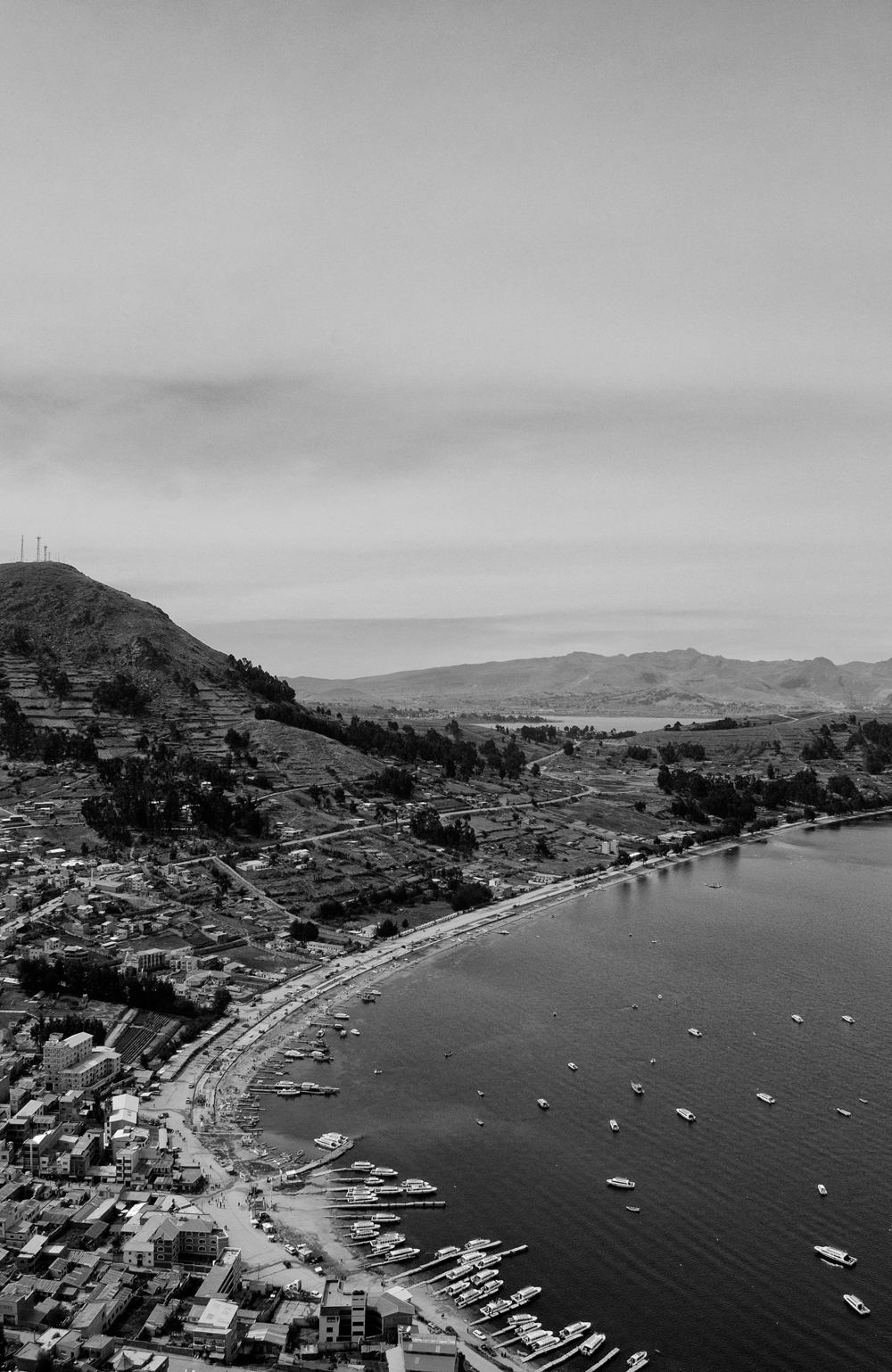Cruising El Lago
Text and images from my article in The Bolivian Express Magazine Transport Issue
Despite being a landlocked nation there are plenty of opportunity to travel by boat in Bolivia. Bolivia is home to the highest navigable lake in the world, the infamous Lake Titicaca. Here, the best way to travel is of course by boat. Traditionally, boats hand crafted from Totora reeds were used to travel between the shores of the 8,372 km² lake and its islands. Today, however, it is possible to see all manner of aquatic transportation around the lake.

Sitting at the top of Cerro Calvario looking towards the horizon, one would be forgiven for assuming that the vast expanse of water before them was an ocean. During my time in Copacabana I had to keep reminding myself that this wasn’t an ocean at all, but an enormous lake, spanning 8,372 km², and cutting through the highlands of Bolivia and Peru. The idea of travelling by boat in a landlocked country may seem improbable to some, yet there is no other way of cruising Lake Titicaca. These vessels offer a convenient and natural way of connecting the dozens of communities that live near its shores.
Walking along the beach it is impossible not to be stopped by boat owners trying to lure you into a 30 minute trip on a paddle boat, an excursion to the Isla de Sol, or a tour of the Islas Flotantes. The competition is fierce along the beach with so many different boats, prices and destinations. I’m bombarded from every angle by shouts of “Senorita, senorita! Media hora solo cuarenta bolivianos!” They needn’t worry, Copacabana seems to be the destination for backpackers and family excursions. Hoards of tourists pour from the ever-arriving buses onto the shores of the lake ready to take a ride.
Walking along the beach it is impossible not to be stopped by boat owners trying to lure you into a 30 minute trip on a paddle boat, an excursion to the Isla de Sol, or a tour of the Islas Flotantes. The competition is fierce along the beach with so many different boats, prices and destinations. I’m bombarded from every angle by shouts of “Senorita, senorita! Media hora solo cuarenta bolivianos!” They needn’t worry, Copacabana seems to be the destination for backpackers and family excursions. Hoards of tourists pour from the ever-arriving buses onto the shores of the lake ready to take a ride.
The variety of people who own and run the lake’s transportation are as diverse as the nationalities of those attracted to the holiday destination. Teenage boys, giggling Cholitas and stoney-faced men are among those prowling the shores in the search for customers.

Angel takes tourists around the lake in his rowing boat from the small, quiet town of Sahuiña, around 6km’s from Copacabana. The offer is advertised as eco-friendly and promises an authentic experience. Traditional rowing boats (totora reed boats or sailboats) are favoured over the faster, noisier, engine-powered alternatives. Angel has been rowing for 20 years but claims that today the children of Sahuiña learn from a very young age.

Many women own and rent out sinister swan-shaped paddle boats on the lake. Lined up along the beach as if ready for battle, the paddle boats are a popular choice for red-faced American and European travellers. South American families, who travel to the lake during the quieter seasons to enjoy a weekend away, also favour this laid back and lighthearted way to cruise the lake.

Bigger motor boats are the most common way of reaching the ‘Isla del Sol’, Lake Titicaca’s biggest island, where the most common form of subsistence for the local comunarios is agriculture. Each voyage takes an hour and a half to reach the shores of the isla, explaining why the operators are keen to fill every space on board before setting sail.